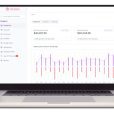With a US company earnings season for the second quarter kicking off this week, US shares are in a difficult position. Earnings are expected to decline by around 44 percent for the quarter, which would lead to the largest year-over-year decline in the S&P 500 earnings since Q4 2008.
This is somewhat understandable given the worst viral pandemic of the past 100 years, which has led to lockdowns and other economic disruptions but also significant stimulus measures.
However, it leaves US shares in a dangerous position. The price of these shares are now at the highest levels they have been relative to earnings since the dot-com bubble in the early 2000’s; even exceeding the peak price-to-earnings ratios of the GFC.
As a result, there are two possibilities, either share prices will have to fall to bring them more in-line with current earnings, or earnings will have to jump rapidly; as we can see by the chart below, rarely do shares stay this expensive relative to their earnings for long.

Lets explore the two possibilities:
- Earnings recover
According to the above chart, an expected and prompt rebound in earnings across the second half of 2020 and first half of 2021 will cause the ratio of price to earnings to normalise. This indicates that the average analyst believes that earnings weakness will be confined to the current quarter. This is what happened during 2009, with post-GFC earnings recovering enough to normalise P/E ratios.
The risk to this scenario is that earnings don’t bounce back as quick as expected. In fact, in the lead up to every earnings season in the post-GFC period, analysts have progressively revised lower the forecasts as the earnings date approaches, which has been especially true recently. By the time Q3 2020, Q4 2020, and Q1 2021 come around, there is no guarantee that earnings forecasts remain strong enough to normalise P/E ratios by themselves.
- Share prices fall
The other option is for share prices to fall, which will also reduce P/E ratios. This is what happened in the dot-com bubble in 2001, prices fell substantially to normalise relative to earnings, with prices taking almost three years to recover back to where the were at the peak P/E ratio levels.
If earnings do not recover as expected from here, or perhaps even if they do, we could see equity selling to take prices back to a more normal level relative to earnings.
Which scenario is more likely?
It is very likely that earnings expectations will drop between now and the upcoming reporting periods, potentially push P/E ratios to exceed their highs from the dot-com era. However, that doesn’t mean share prices will fall; rather we could be looking at higher-for-longer share prices.
The parallels between now and the GFC P/E peak are the massive stimulus programs being conducted around the world, and particularly the low interest rates and bond buying programs of central banks. In this environment where borrowing is extremely cheap and the return from cash deposits and Government bond yields is so low, it is entirely possible that we see share prices remain high as they wait for earnings to eventually catch up.
The US company earnings season begins in earnest next week, Emerald Equities is running a special edition ‘US Earnings Webcast’ this Thursday at 7:00 PM AEST, if you would like to view the session, sign up here.
- XJO to rise despite slight US pullback - August 30, 2024
- Markets jump strongly higher - July 29, 2024
- US shares drop with tech selling, XJO to continue lower - July 25, 2024













Leave a Comment
You must be logged in to post a comment.